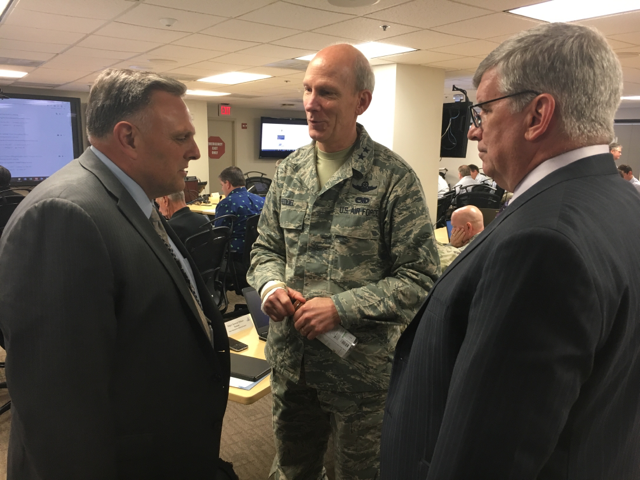Hurricane Harvey Best Available Data
August 29, 2017 – At the request of FEMA, the Department of Homeland Security (DHS) Geospatial Management Office and the Department of Interior (DOI) stood-up a dedicated Open Data Site (HIFLD for Harvey) to aggregate the most relevant and best available data in a single place – to support Hurricane Harvey response and recovery across all levels of government and whole community partners. HIFLD for Harvey is publicly available at the link below:
HIFLD for Harvey is a part of the Federal Geospatial Platform infrastructure. NAPSG is honored to be a part of the HIFLD team with DHS, DOI, and ArdentMC in this critical effort.
Data Available Now
Over 60 data sets are accessible now in HIFLD for Harvey providing the best available data for Harvey-specific information requirements. More data is being added around the clock. This site is being curated to ensure it’s the most relevant and best available data for Harvey operations.
USNG Map Books for Affected Counties
HIFLD for Harvey contains 1:25K USNG Map Books for the affected counties. Map books for each county are being added to the site as produced, with 15 county map books available now. This is a critical resource for first responders and others supporting response and recovery operations. USNG Map Books are being produced in partnership with Delta State University.
How You Can Contribute to HIFLD for Harvey
- Spread the Word! – Use #HIFLD4Harvey in social media posts. Share the website out with your friends and colleagues in anticipating GIS needs, mutual aid requests, and any related response/recovery efforts.
- Got Data for Harvey? – If you have data that is directly relevant to Harvey that you consider best available, send an email with the link to the data to HIFLD@hq.dhs.gov.
- Unmet Mission Critical Data Needs? – If you have identified a mission critical information requirement that is not currently supported by data available in HIFLD for Harvey, please let us know what the need is by sending an email to HIFLD@hq.dhs.gov.
Other relevant GIS resources for Harvey are available here: https://www.napsgfoundation.org/hurricane-harvey-resources/





